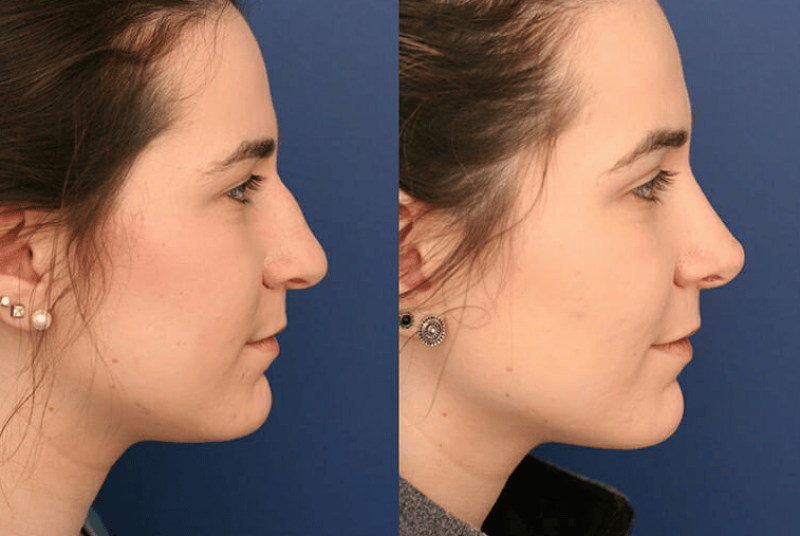Rhinoplasty, commonly known as a "nose job," is a popular cosmetic procedure aimed at reshaping and enhancing the appearance of the nose. Over the years, it has evolved from a solely aesthetic procedure to a surgery that can also improve nasal functionality and alleviate breathing difficulties. As one of the most sought-after cosmetic surgeries globally, rhinoplasty has been transforming lives by boosting self-confidence, improving facial harmony, and addressing structural issues that impact breathing. In this blog, we will explore the different aspects of rhinoplasty, including its history, techniques, benefits, potential risks, and the recovery process.
Historical Evolution
The roots of rhinoplasty can be traced back to ancient civilizations. Ancient Egyptians were among the first to practice nose surgery, primarily to repair injuries sustained in battle. Later, in ancient India, the practice of rhinoplasty was documented in texts like the "Sushruta Samhita," where it was used for reconstructive purposes, particularly for victims of disfiguring injuries.
Modern rhinoplasty began to take shape in the 19th century when European surgeons refined the techniques for aesthetic improvement. However, it was not until the 20th century that rhinoplasty truly gained widespread popularity. Technological advancements, such as the development of anesthesia and surgical instruments, enabled safer and more effective procedures.
Different Types of Rhinoplasty
- Aesthetic Rhinoplasty: Aesthetic rhinoplasty aims to enhance the appearance of the nose, making it more symmetrical, proportionate, and in harmony with other facial features. It can address issues like a dorsal hump, wide nostrils, a bulbous tip, or a deviated septum.
- Functional Rhinoplasty: Functional rhinoplasty primarily focuses on improving the functionality of the nose, especially when structural issues, such as a deviated septum or nasal valve collapse, impede proper breathing. This type of rhinoplasty can have both cosmetic and health benefits.
- Revision Rhinoplasty: Also known as secondary rhinoplasty, this procedure is performed to correct unsatisfactory outcomes from previous rhinoplasties. It requires a highly skilled surgeon due to the complexity of the procedure and the presence of scar tissue.
The Rhinoplasty Procedure
Rhinoplasty is typically performed as an outpatient procedure under general anesthesia. Surgeons employ either an open or closed approach, depending on the complexity of the case and the surgeon's preference.
- Closed Rhinoplasty: In a closed rhinoplasty, the surgeon makes incisions inside the nostrils, hiding any potential scarring. This approach is suitable for less complicated cases, as it offers limited visibility and access to the nasal structures.
- Open Rhinoplasty: An open rhinoplasty involves an additional incision across the columella (the strip of tissue separating the nostrils). Though it leaves a small scar, the open approach provides the surgeon with better visibility and access to the nasal structures, making it ideal for more complex cases or revision surgeries.
During the procedure, the surgeon may modify the bones, cartilage, and tissues of the nose to achieve the desired shape and structure. With advancements in technology, some surgeons now use computer imaging to give patients a preview of the potential post-operative results.
Benefits of Rhinoplasty
- Enhanced Aesthetics: Rhinoplasty can bring balance and harmony to the facial features, significantly improving one's appearance and self-confidence.
- Improved Breathing: Functional rhinoplasty can correct structural issues that obstruct the airways, leading to better breathing and improved sleep quality.
- Correcting Birth Defects or Trauma: Rhinoplasty can be a life-changing procedure for individuals born with nasal abnormalities or those who have suffered traumatic injuries affecting the nose.
- Boosted Self-Confidence: A successful rhinoplasty can boost self-esteem and help individuals feel more comfortable and satisfied with their overall appearance.
Potential Risks and Considerations
As with any surgical procedure, rhinoplasty carries some potential risks, including:
- Infection and bleeding
- An adverse reaction to anesthesia
- Scarring
- Nasal asymmetry
- Temporary or permanent loss of smell
- Dissatisfaction with the results
- Breathing difficulties persisting or worsening
It is crucial to choose a qualified and experienced surgeon to minimize these risks and ensure the best possible outcome. Patients should have realistic expectations and a clear understanding of the potential benefits and limitations of the procedure.
Recovery Process
After rhinoplasty, patients can expect some bruising and swelling around the nose and eyes. Cold compresses can help reduce swelling during the initial days of recovery. Pain medication may be prescribed to manage any discomfort.
Strenuous activities should be avoided during the first few weeks, and patients should follow their surgeon's post-operative instructions diligently. Nasal packing and splints may be used temporarily to support the healing process.
It is essential for patients to be patient during the recovery period, as final results may take several months to become fully evident.
Conclusion
Rhinoplasty is a transformative surgical procedure that goes beyond aesthetics, addressing both cosmetic concerns and functional issues. With the evolution of surgical techniques and technology, it has become safer and more effective than ever before.
For individuals considering rhinoplasty, it is vital to thoroughly research potential surgeons, consult with them to discuss expectations and potential risks, and understand the recovery process. When performed by a skilled and experienced surgeon, rhinoplasty can enhance both facial aesthetics and quality of life, leading to newfound confidence and improved well-being for patients.
